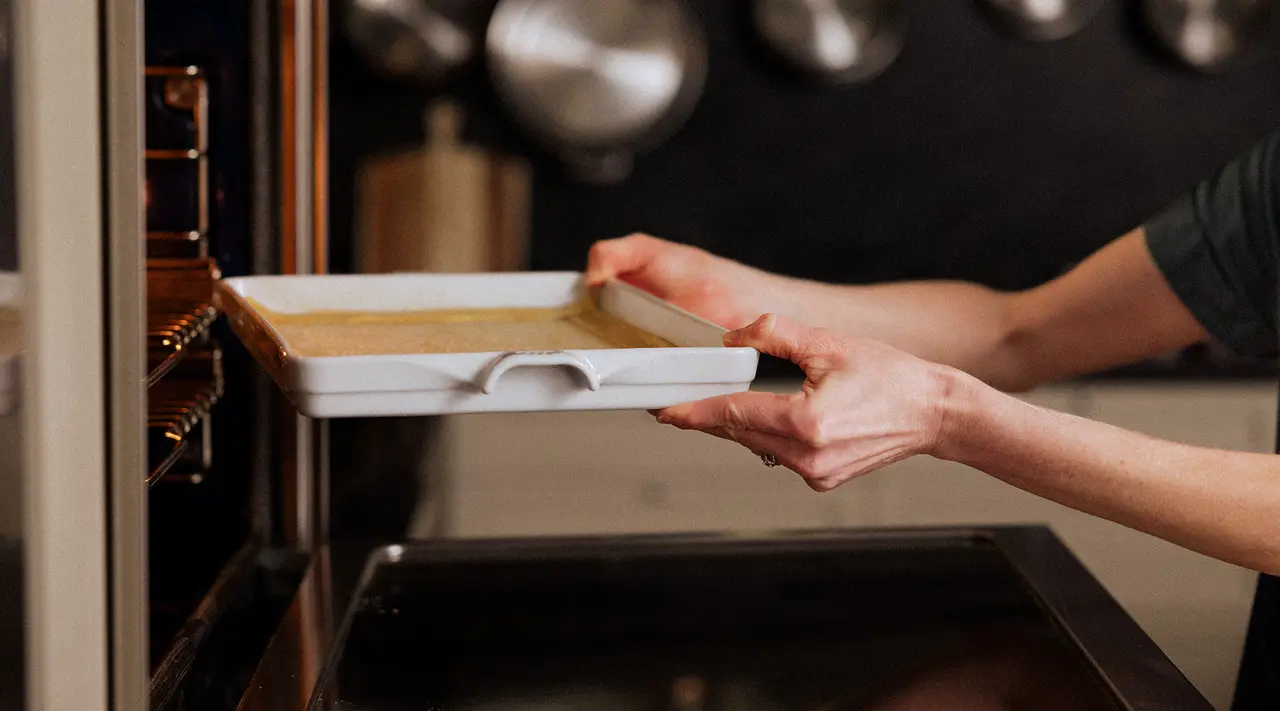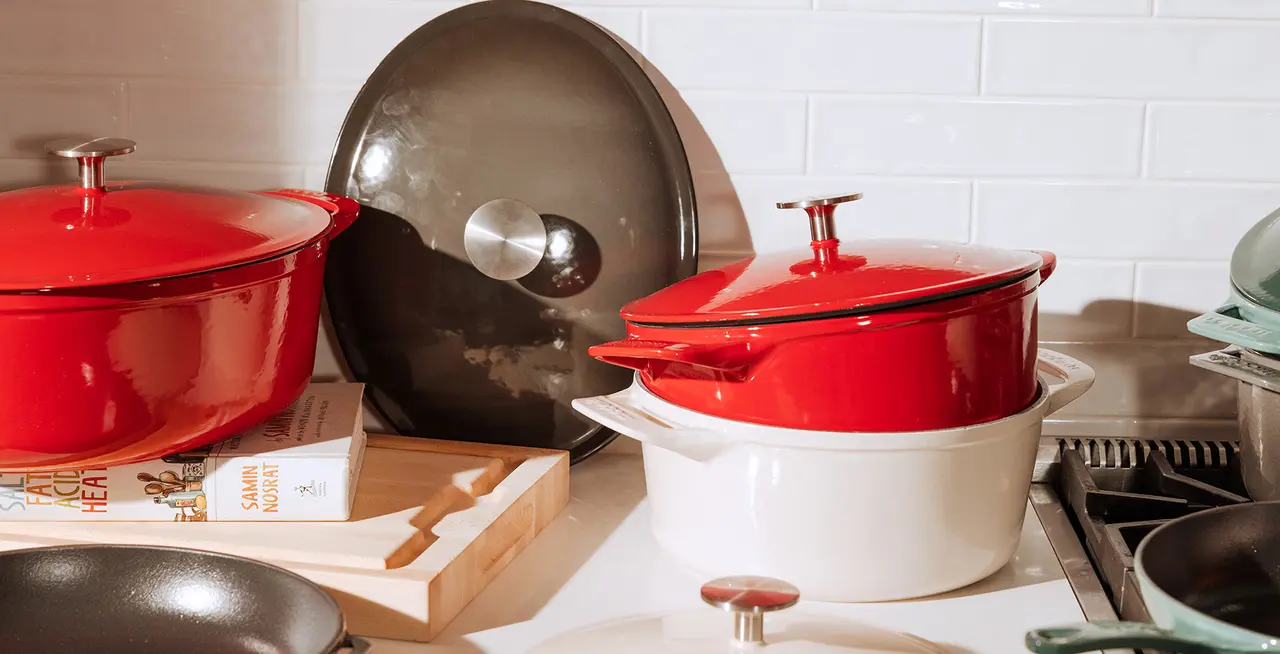Because the utmost care went into our French Porcelain Bakeware, we wanted to get tips on how to add the utmost care to your baking process. So we spent some time with some of our favorite bakers in town, over at Both Hands Banking Co. We brought over our Bakeware and they gave us a few pointers.
Both Hands Baking Co. formed when two friends, who met in the food industry, discovered that they were positive and supportive forces for one another. When the pandemic hit, and they realized they weren’t returning to the jobs they had, Maddie and Gab wanted to create their own work environment. Enter a micro-bakery, churning out bread, pies, cakes, and more.
“Defining our own success has been the most gratifying part of it all,” they said. “We make the rules.”
After getting the lowdown on how they make their Tarragon Olive Oil Cake, we sat down with Gab and Maddie to figure out what people can do at home to take their baking to the next level. Here’s what they had to say.
1. Make sure you have a good read on the oven temperature by using a thermometer.
It is essential to have a calibrated oven temperature, as having the wrong temperature can destroy what you’re cooking, even if you’ve done every other step perfectly. Gab keeps three thermometers in her oven because of the various hot spots she noticed in hers. For laminated pastries, like croissants, if the oven is not hot enough, all of the hard work you’ve done is gone if your oven temperature is wrong.
Suppose one corner is hotter than the other. In that case, you want to rotate the dish to compensate and allow for even baking, so knowing if your oven has different temperatures is essential. Baking is a chemical reaction, so if it’s not the right temperature, you’ll have the wrong reaction.
2. Be sure to mix your ingredients properly.
Fully incorporating your ingredients is critical, and doing so with the correct tools is even more critical. Use a whisk when you want to incorporate air into your ingredients, and use a spatula when you want to fold things together and not create height or lift.
In a stand mixer, things can get stuck on the bottom, so mix your ingredients using the attachments, but then make sure to take the bowl off the mixer and incorporate the rest by hand at the end.
Overmixing your ingredients takes the air out, which can cause toughness and creates a chewy, leathery cake. If you see clumps of flour, don’t worry. These will dissipate when baked in the oven.
3. Make sure all of your ingredients are at the proper temperature.
If you’re emulsifying your ingredients, it’s important to have them at room temperature to help achieve proper emulsification, which is the uniform combination of ingredients. When you emulsify, you are combing and incorporating air, so that when you go to bake your dish, the air serves as leavening and helps create a lighter, fluffier texture. If you don’t have ingredients at the same temperature, you can’t combine your ingredients thoroughly, so you’ll end up with chunks of ingredients in your finished products.
However, there are some times when you want ingredients to be cold and at different temperatures. When making a pie, you want the butter in the crust to be cold. It is essential to follow the recipe.
4. Make sure your cake is at the proper temperature before you glaze it.
It’s important to make sure your cake is at the right temperature when you glaze it, so you get the consistency of the glaze you want to achieve. For a ganache, you want the cake to be cold and the glaze to be warm for a glassy, drippy texture. For an olive oil cake, you want all the ingredients cooled for a glossy finish. For cinnamon buns, you want the glaze to be lukewarm, so it doesn’t runoff, but you still get that signature gooey icing drip.
5. To achieve a more flavorful and tender cake, you should apply a cake soak.
Adding a cake soak makes a huge difference if you’re building a layer cake and you have a lot of layers of frosting, as it adds a protective coating. Frosting will keep a cake moist, but a layer of simple syrup underneath the frosting will make the cake even more moist and tender.
It’s also a great way to add in another flavor element or build flavor. Chocolate with coffee, carrot cake with rum, the potential for complementary flavors is vast. We added another layer of tarragon in the olive oil cake by steeping the tarragon in simple syrup and applying that to the cake before adding the frosting. Simply use a pastry brush to apply the cake soak directly on the cake.























